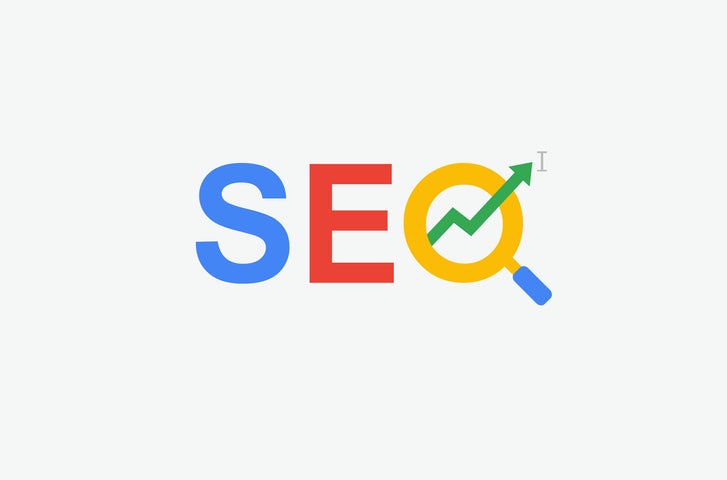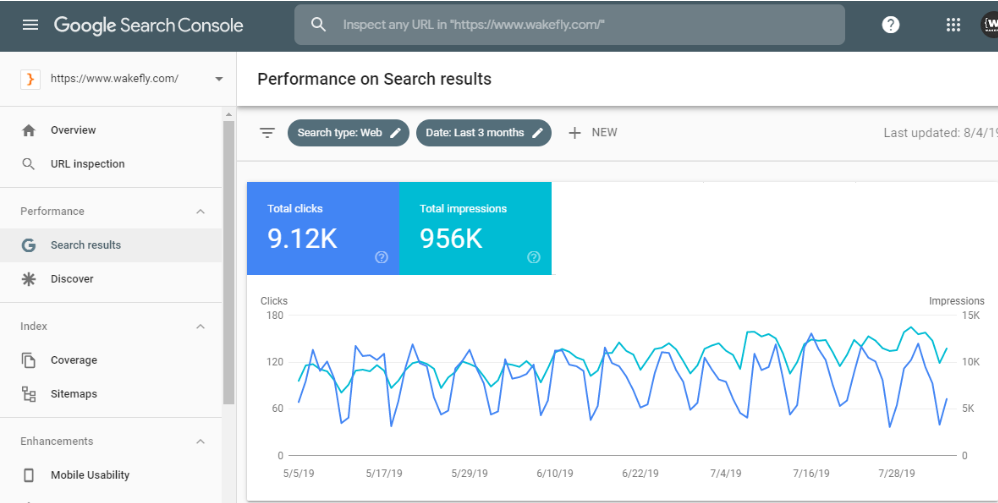Posted on 8/8/2019 in Digital Marketing
Well-optimized content is key to having a successful website. However, with Google’s ongoing updates to their algorithms, it can be difficult to stay up to date about what is most important. Back in 2016, we put together a checklist for on-page SEO. Many of these items are still applicable but we have updated the list for 2019.

There are a lot of tactics that you can take to optimize your content and improve your page rank. In the list below, we have put together a 10 point checklist of the most important items to keep in mind when producing content.
Wakefly’s 2019 On-Page Checklist for SEO
1. Create Content for People, Not Spiders: As Google’s algorithm continues to grow and evolve, it recognizes the content of your pages and ranks based on relevancy. Traditional SEO techniques still matter, but you shouldn’t write for bots and crawlers. Customers are the most important visitors to your site, so be sure to tailor your content to them. Search engines keep the user experience in mind when crawling your site. If you write for people, you will inevitably write for the machines too. If you want to avoid penalties, stay away from thin or shallow content, keyword stuffing and hidden text.
2. On-Page Copy Should Contain at Least 300 Words: The spiders need enough content to understand the intent of your page and people need enough to be interested in your page. Having, say, 50 words on it does not allow a page to rank well for computers or people. 300 words are the accepted minimum for on-page copy to rank, but it is highly recommended that your pages contain around 1,000 words of meaningful content. Blogs should have a minimum of 1000 words. There is no hard and fast rule that having a specific word count will result in a high page rank but search engines do seem to reward length. Ultimately, it’s all about finding the balance between quality content that engages your audience.
3. Don’t Use Titles and Meta Descriptions That are Too Long: These rules are not ranking factors, but a best practice to help your click-through rate when people find your pages through organic search. Meta descriptions are essentially your way to advertise your content to potential website visitors. If title tags or meta descriptions are too long, the search engines will truncate the copy to allow them to fit. Keeping titles under 60 characters and meta descriptions below 160 characters allows them to appear in full on both desktop and mobile platforms, improving the user experience and increasing the likelihood that a searcher will click through.

4. Use Internal and External Links: Linking helps search engine rankings as well as overall user experience. When visitors find your content engaging or valuable, they are more likely to interact with your site. If they cannot find the content they desire or become lost or frustrated, they will leave your site. Internal links help keep people on your site and push them further down the funnel.It is best to use keyword-rich anchor text in your internal links to clue the user into knowing exactly what this linked page will be about. Although they will send people off your page, you should also use external links on your site. The use of these links can lower the bounce rate and shows that you perform research. People will find your site more credible that way.
5. Optimize Images: People are visual learners. By adding pictures or videos you can capture attention more readily. People are either attracted by visual media or stay on page for longer because of it. Pictures and videos are important from a technical SEO standpoint as well. The file name, size and alt text are all important elements to consider. When naming your image or video, use a simple file name that describes what it is (ie: orange_cat.png). Optimizing the file size is important because it can have an impact on page speed, which is also a ranking factor (see #10). You want to make sure your images aren’t larger than they need to be and that they are in a proper file format. SVGs are best for icons, PNGs are good for graphics and JPEGs are best for photos. Alt text should be very descriptive of the content within an image. For this image, a good example of alt text would be: orange cat laying down on tan carpet at top of the staircase. This helps not only with SEO but also with ADA compliance because it allows for visually impaired users to understand what the image is about. An exception to this rule would be decorative images. This is a situation where it's ok to leave the alt text field blank.

6. Keep your URLs Short and Descriptive: The way you structure your URL affects how search engines understand it. Use short URLs that include your target 1 or 2 keywords. Keeping them human-readable versus lots of random numbers and letters can also factor into the user experience. (Remember #1: write content for people.) Research has shown that shorter URLs rank better. Additionally, longer URLs are usually multiple levels deep within a site, resulting in lower link authority. A site with higher link authority usually ranks higher.
7. Set Up your Site in Google Search Console: Everyone with a website should set up their site in Google Search Console. It’s a free tool so there’s really no excuse. This is a very powerful tool that can identify errors across your site as well as provide you useful insight into how users are finding you.

Some of the most important items within the Search Console that you can use to optimize your site are:
- Identify and resolve crawl errors
- Fix broken links
- See which keywords are generating the most traffic
- Submit your sitemap/make sure correct pages are being indexed
- Review mobile usability issues
8. Use Schema Markup: Schema markup is code that you can put on your website that helps search engines provide a more detailed and descriptive search result to users. It’s more robust than a meta description because it adds context to your search result. These are known as “rich snippets.” In the example below, the markup has been added to pull out the review and rating content from the page and display it as part of the search result. This adds credibility. There is no clear evidence that schema improves search rankings but content that uses rich snippets displays more prominently in search results and often has a higher click-through rate. We provide more information about using schema markup and structured data in this post.

9. Get an SSL Certificate: Using “https” for your site has been a ranking factor for Google since 2014. It’s impact on rank is fairly minor, but Google’s Chrome browser began flagging “HTTP” sites with forms as “not secure” starting in October 2017. By July of 2018, all non-https sites were marked this way. Many site users could view this message as a vulnerability that you see reflected in a higher bounce rate.
10. Check your Site’s Load Time: Page speed is a ranking factor for Google and Bing. If your site is loading slow, users will assume there is an issue and bounce away from your content quickly. If you want to check a particular page on your site, Google PageSpeed Insights is an excellent tool. It will score the speed of your page on both desktop and mobile and give you tips on how you can optimize your content to improve it. Page speed is especially important as a ranking factor on mobile search since Google released its “Speed Update” in July 2018.
Bonus Tips
Here are 5 additional marketing tips to help optimize your site.
1. Monitor Backlinks: Backlinks have been a top-ranking factor for Google for years so you definitely should keep an eye on who is linking to your content. While having a lot of backlinks helps rank, quality is equally important. You should monitor your backlinks on a regular basis to make sure there aren’t any spammy sites linking to your content. SEMRush is our tool of choice for checking for potentially spammy or “toxic” domains. Whenever possible, reach out to the webmaster and request the removal of any unwanted links to your site. When that isn’t possible, you can upload a disavow link to Google so that they will disregard their relationship with your site.
2. Guide Users to Conversion Points: The definition of a conversion may vary but the goal of any website is to drive users to fulfill an action. This could be a transactional purchase or something simpler like downloading an eBook. Be sure to consider user flows when architecting your site content. You can do this through a combination of internal links and calls to action. You should also consider if you have the appropriate content to satisfy users based on their current stage in the buyer's journey. Review your site and catalog how much content is appropriate and relevant for those in the awareness, consideration and decision stage. Use calls to action (CTAs) that help guide them forward to the next stage.
3. Always Be (A/B) Testing! There is no perfect formula that can be provided for writing perfectly optimized content that guarantees conversions. Your target audience is going to be unique, just like the data you collect. Analyze that information to see what types of content appeals to your users. You can use this going forward to market to them better. For any high-value pages, we recommend A/B testing things like headlines, CTAs, colors and content placement. There are a number of paid tools that can help with this or you can create a Google experiment for free using their Optimize platform.
4. Delete or Revamp Low-Quality pages: If you have pages on your site that aren’t getting traffic, are outdated or have very little content, they can actually hurt your SEO. This is known as Index Bloat because search engines have indexed many more pages than you want to include in your sitemap. This eats up resources and slows down their ability to index your higher-quality pages. You should either remove those pages or update them to make them more relevant and valuable. The types of pages to consider as possible “low-quality pages” are:
- Search results pages
- Paginated URLs
- CMS category and tag pages
- Old or poor-performing blog posts
- Duplicate content
- Pages with “thin content” - under 300 words
5. Keep Your Content Fresh: Content recency is important - not just because it’s a ranking factor - but it makes users more likely to value that the information is accurate. If you are researching a product or service, you are probably more likely to take the advice of a web page that was updated this year versus an article from 2010.
Google has approximately 200 ranking factors that influence how your content will appear in search results. It can be really overwhelming to know where to begin but hopefully this checklist can serve as a useful resource.
Struggling to get more visitors to your site?
Request a Free SEO Audit of Your Website!
Related Articles

How Do I Optimize My Website for AI?
Why do you need to optimize your website for AI?AI-powered search engines like Google’s AI Overview, Perplexity, and tools such as Microsoft's [...]

Outdated or Outstanding? How to Tell If Your Website Needs a Refresh
Your website is the digital face of your business. It serves as a first impression, a marketing tool, and a resource for potential customers. [...]

Preparing a Website Redesign Budget for 2025: A Step-by-Step Guide
As we approach 2025, businesses are recognizing the necessity of a fresh, user-friendly website to stay competitive in a rapidly evolving digital [...]
